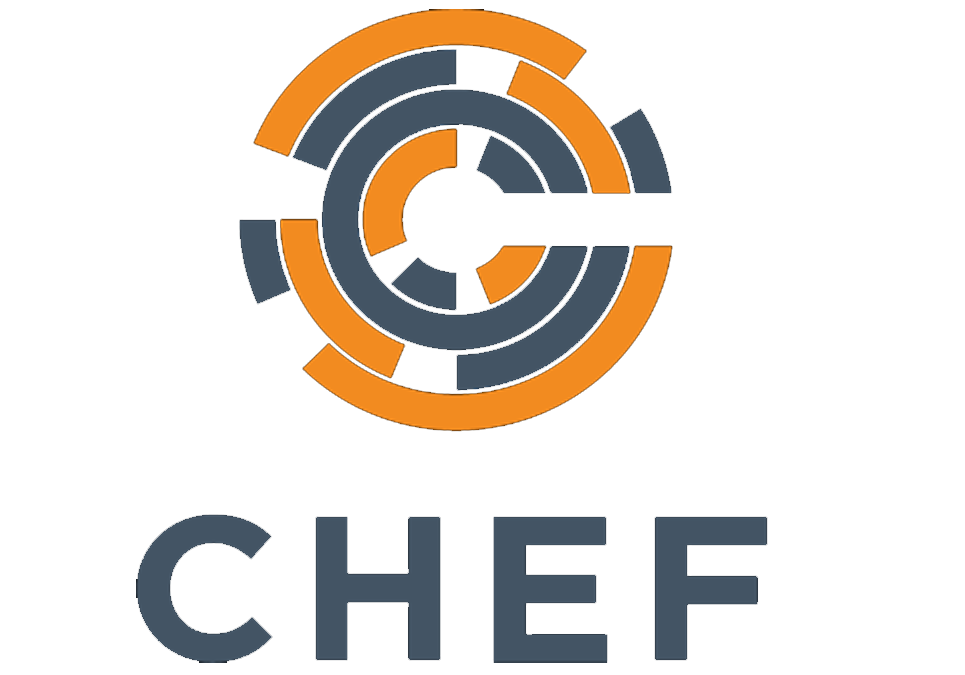- Call us: +1 (469) 756-6329 | +91 7004 215 841
- Email: info@devopsconsulting.in
Chef Training
ABOUT
Chef Training at devopsconsulting.in offers an extensive program designed to help professionals master Chef, a leading configuration management tool used for automating infrastructure and application deployments. The training covers essential aspects of Chef, including its architecture, resources, and recipes, enabling participants to efficiently manage and automate their IT environments. Through practical, hands-on exercises, learners will gain experience in writing and managing Chef cookbooks, using Chef’s DSL (Domain-Specific Language), and integrating Chef with various CI/CD pipelines. The course also includes instruction on best practices for scaling and maintaining Chef in production environments, troubleshooting common issues, and optimizing performance. By the end of the training, participants will be well-equipped to leverage Chef’s powerful features to streamline their operations, ensure consistent configurations, and enhance overall efficiency in their DevOps workflows.

COURSE OBJECTIVES
The course objectives for Chef Training at devopsconsulting.in are designed to provide participants with a comprehensive understanding of Chef and its applications in infrastructure automation and configuration management. By the end of the training, attendees will:
- Understand Chef Fundamentals: Gain a thorough understanding of Chef’s architecture, including its components such as nodes, cookbooks, recipes, and the Chef server.
- Develop Proficiency in Chef DSL: Learn to write and manage Chef cookbooks and recipes using Chef’s Domain-Specific Language (DSL) to automate configuration tasks and deploy applications.
- Implement Infrastructure Automation: Acquire skills to automate the provisioning and management of infrastructure, ensuring consistent configurations and efficient operations across various environments.
- Utilize Chef Tools and Resources: Explore how to use Chef tools, such as Knife and Berkshelf, and manage resources to streamline the development and deployment process.
- Integrate with CI/CD Pipelines: Learn how to integrate Chef with Continuous Integration and Continuous Deployment (CI/CD) tools to enhance automation workflows and deployment processes.
- Troubleshoot and Optimize: Develop the ability to troubleshoot common issues, optimize Chef configurations, and implement best practices for maintaining a robust and scalable Chef environment.
These are primary objectives of this training...
- Chef Resources
- Cookbooks
- chef-client
- Testing Cookbooks
- Ohai and the Node Object
- Data Abstraction
- Workstation Installation
- The Chef Server
- Community Cookbooks
- Managing Multiple Nodes
- Roles
- Search
- Environments
PRE-REQUISITES
Before enrolling in Chef Training at devopsconsulting.in, participants should meet the following pre-requisites to ensure they can fully benefit from the course:
- Basic Knowledge of IT Infrastructure: Familiarity with fundamental IT infrastructure concepts, including servers, networks, and operating systems, is essential for understanding how Chef manages and automates these components.
- Experience with Command Line Interfaces: Proficiency in using command line interfaces, especially in Linux/Unix environments, is necessary for performing tasks and executing commands during the Chef configuration process.
- Understanding of Scripting Languages: Basic knowledge of scripting or programming languages, such as Ruby or Bash, will be beneficial for writing and customizing Chef cookbooks and recipes.
- Familiarity with Configuration Management: Prior experience with configuration management tools or concepts can help in grasping Chef’s role and best practices in automation and infrastructure management.
- Exposure to Version Control Systems: Experience with version control systems like Git is useful for managing and tracking changes in Chef cookbooks and configurations.
FEATURES
The Chef Training at DevOpsConsulting.in offers a range of features designed to provide a robust and practical learning experience. Participants will benefit from a thorough introduction to Chef, covering its core concepts and functionalities for effective configuration management and automation. The training includes hands-on exercises that allow attendees to practice writing and managing cookbooks, creating custom resources, and automating the deployment of applications.
The course emphasizes integration techniques, demonstrating how to incorporate Chef with other DevOps tools and CI/CD pipelines for streamlined automation. Participants will gain insights into best practices for using Chef in agile environments, ensuring scalable and efficient infrastructure management. Additional features include interactive sessions led by experienced instructors, access to comprehensive resources and documentation, and a focus on real-world applications to address common challenges.
By the end of the training, participants will be equipped with the skills to implement Chef effectively in their projects, supported by a certification that validates their expertise.
AGENDA
The Basic Course Program Is Outlined Here:
DevOps Concept & Process - DAY - 1
- Need for DevOps
- DevOps Culture
- DevOps Tools
Configuration Management - DAY - 1
- What Is Configuration Management?
- Why You Need a Configuration Management Tool to Automate IT
- What Is Chef?
- Why Chef Might Be a Good Tool for Your Enterprise?
- Chef Development Tools
Virtualization Essentials - Amazon AWS - DAY - 1
- AWS Essentials
- Amazon EC2
- Chef Provisioning using AWS
Virtualization Essentials - Vagrant - DAY - 1
- Provisioning Using Vagrant and Chef
- Providers and Provisioners
- Installing Vagrant
- Configuring Vagrant
- Vagrant Provisioning Using Chef
Become a Chef Programmer - DAY - 1
- Writing First Chef Recipe
- Chef and Its Terminology
- Chef Syntax and Examples
- Chef Resources, Actions and properties
Cookbooks - DAY - 2
- Using Cookbooks
- Developing Your First Cookbook
- Creating the Index File
- Changing the Metadata
- Uploading the Cookbook
- Running the Cookbook
- Documentation in Chef
- Meta info in Chef
Chef Server - DAY - 2
- Setup Chef Server in Centos
- Chef Organization
- Config Chef Manage
- Working with Knife and configuration
Using Chef Server - DAY - 2
- Uploading the Cookbook
- Bootstraping Linux Nodes
- Bootstraping Windows Nodes
- Running the Cookbook
Advance Chef Part 1 - DAY - 2
- Chef Attributes
- Chef Environments
- Chef roles
- Chef Solo
Advance Chef Part 2 - DAY - 3
- Notifications
- Cookbook Dependencies
- Recipe Inclusion
- Data Bags
- Push Jobs
Chef Code Analysis in Chef - DAY - 3
- Foodcritic Essentials
Chef Unit Testing - DAY - 3
- ChefSpec Essentials
Chef Integration Testing - DAY - 4
- TestKitchen Essentials
Chef Supermarket - DAY - 4
- Public Supermarket Essentials
- Private Supermarket Essentials
Fundamental of Ruby - DAY5
Chef in Windows - DAY5
- POSHChef
- Windows - Configuring Services like IIS
Other useful tools and plugins - DAY - 5
- gsh
- dsh
Some other chef & Knife tools - DAY - 5
- knife-lastrun
- knife-preflight
- Chef-handlers
- knife-flip
- knife-bulkchangeenvironment
- knife-env-diff
- knife spork
Super Chef Advance Topics - DAY - 6
- Chef Automate Essentails
- Chef Compliance
- Chef Backend
- Push Jobs Server
- InSpec



|
|---|
